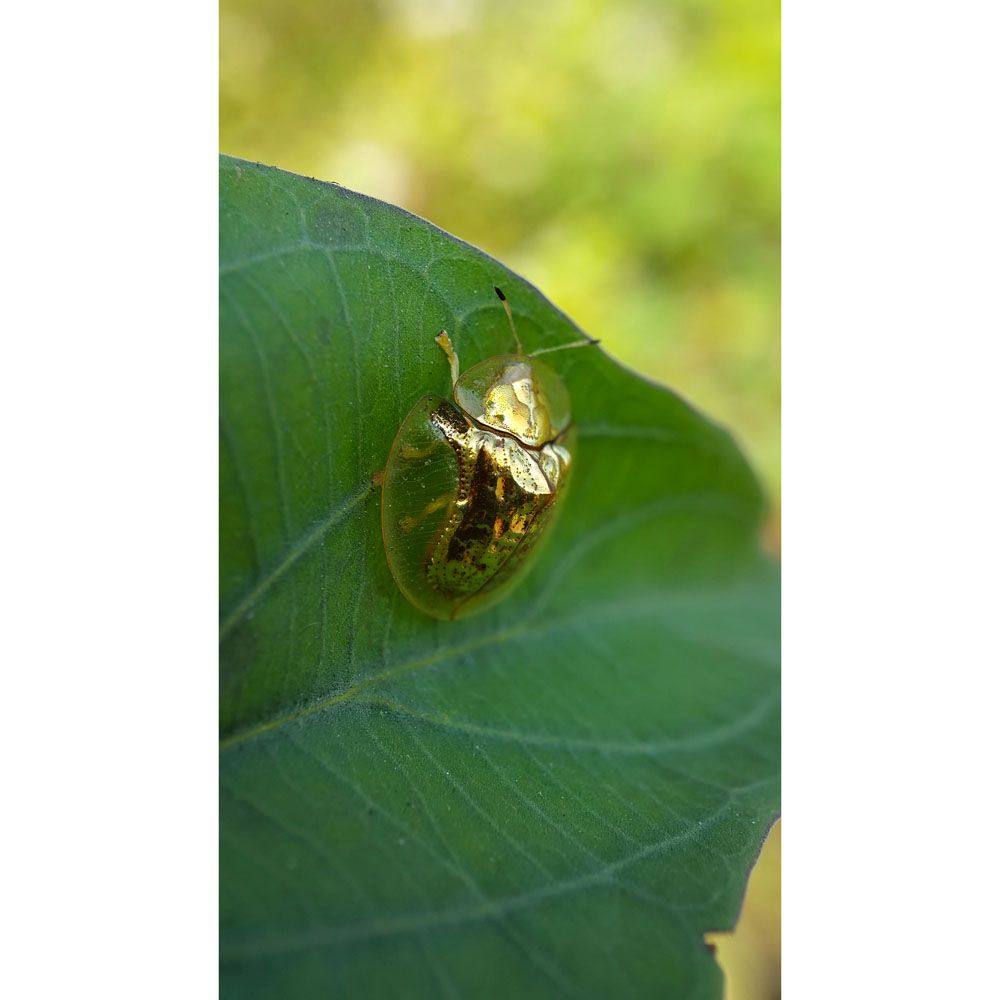
Golden Tortoise Beetle – Charidotella bicolor
Golden Tortoise Beetle (Charidotella bicolor)
Common Name: Golden Tortoise Beetle
Latin Name: Charidotella bicolor
Appearance: The golden tortoise is a small, oval-shaped beetle measuring about 1/4 inches long. Its most distinctive feature is its bright, metallic golden color, which can change to a reddish or bronze in response to environmental stress.
Eggs: The golden tortoise beetle lays its eggs on the undersides of the leaves of its host plants. The eggs are small, yellow, and oval-shaped and hatch into larvae in about a week.
Pupae: The larvae pupate on the leaves of the host plant, spinning a cocoon for protection. The pupae are yellowish-brown and about 1/4 inch long.
Larvae: The larvae are small, green, and slightly spiny, with blackheads. They feed on the leaves of the host plant, consuming small pieces of the leaf surface.
Adults: The adults are bright golden and feed on the leaves of the host plant, causing minor damage. They are active in the hot months and can be found on their host plants throughout the day.
Host Plants: The golden tortoise beetle feeds on various plants, including morning glory and passionflower. It is most commonly found on sweet potatoes, which are considered a minor pest.
Territory:
The golden tortoise beetle is native to Central and South America but has become established in some parts of the southern United States, including Florida and Texas.
Damages Caused by Golden Tortoise Beetle:
Although the golden tortoise beetle does not cause significant damage to its host plants, its feeding can cause small holes in the leaves and a rough, sandpaper-like texture on the leaf surface. In large numbers, it can cause noticeable defoliation of the host plants.
Life History and Habitat:
The golden tortoise beetle has several generations per year and is most active in the warmer months. It prefers sunny, warm habitats with its host plants, such as gardens, fields, and agricultural areas. The golden tortoise beetle (Charidotella bicolor) has several generations per year, with the exact ages varying depending on the local climate. It may have several generations per year in warm temperatures with abundant food sources, while in cooler climates; it may have only one or two generations. The beetles are most active in the warmer months, from spring to fall, and become dormant in the winter. Golden tortoise beetles prefer sunny, warm habitats with abundant host plants. This species is often found in gardens, fields, and agricultural areas where sweet potato, morning glory, or passions flower are grown. These plants provide the beetles with food and a place to lay their eggs and pupate.
